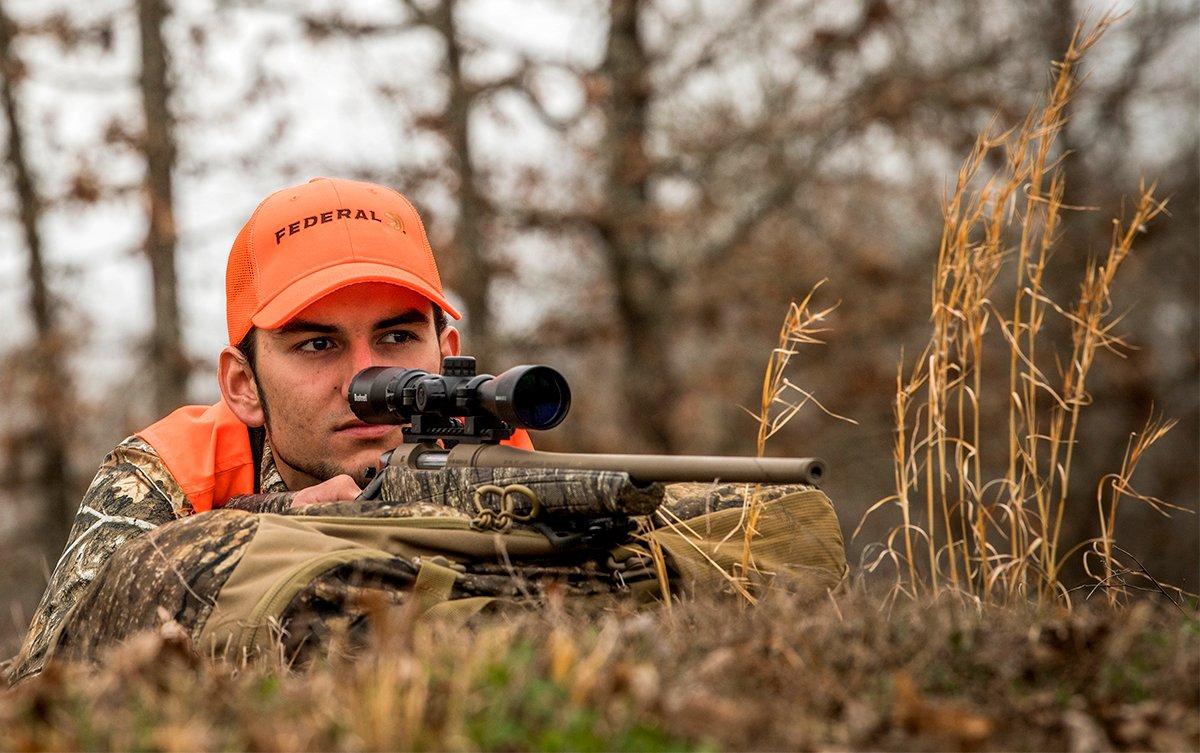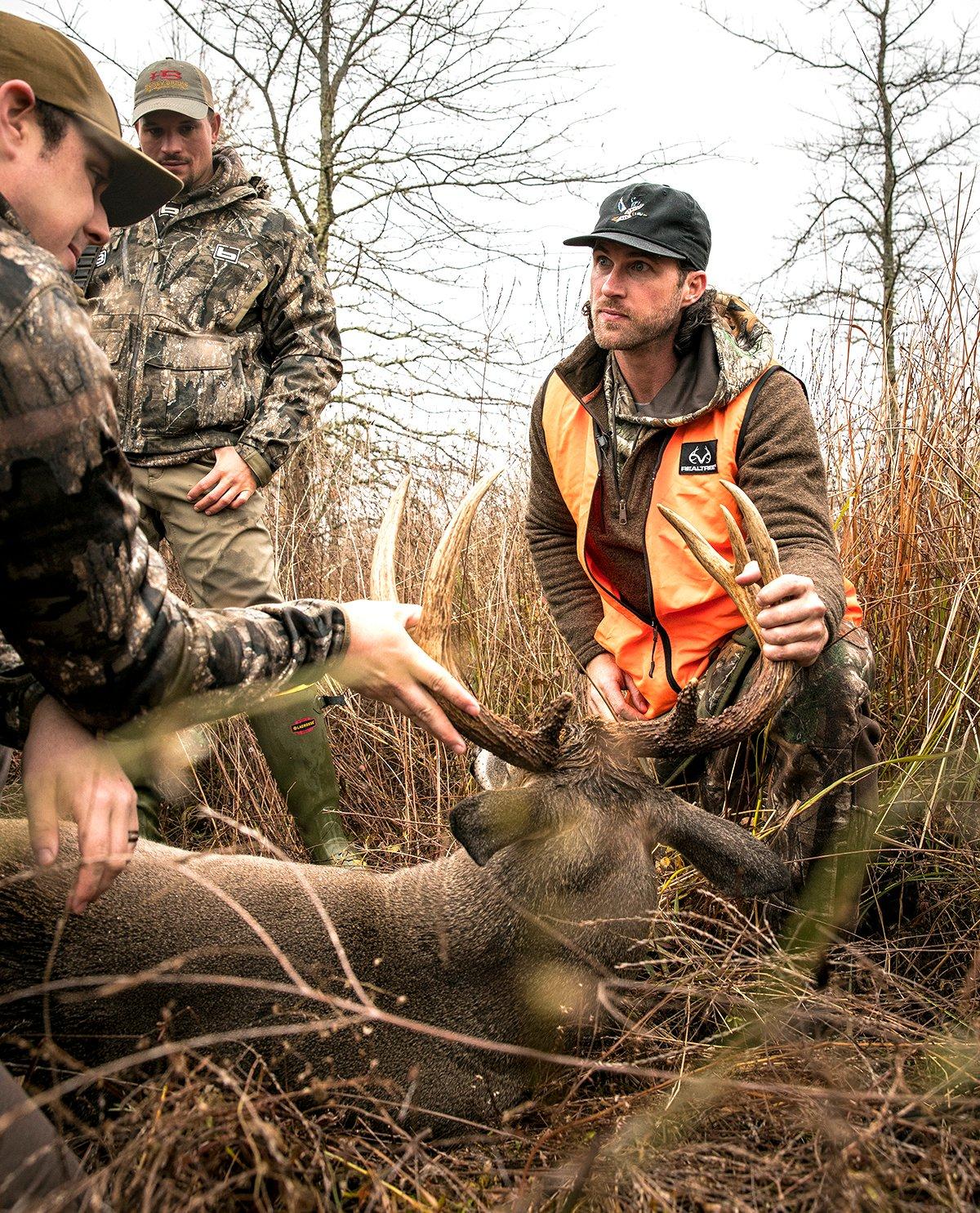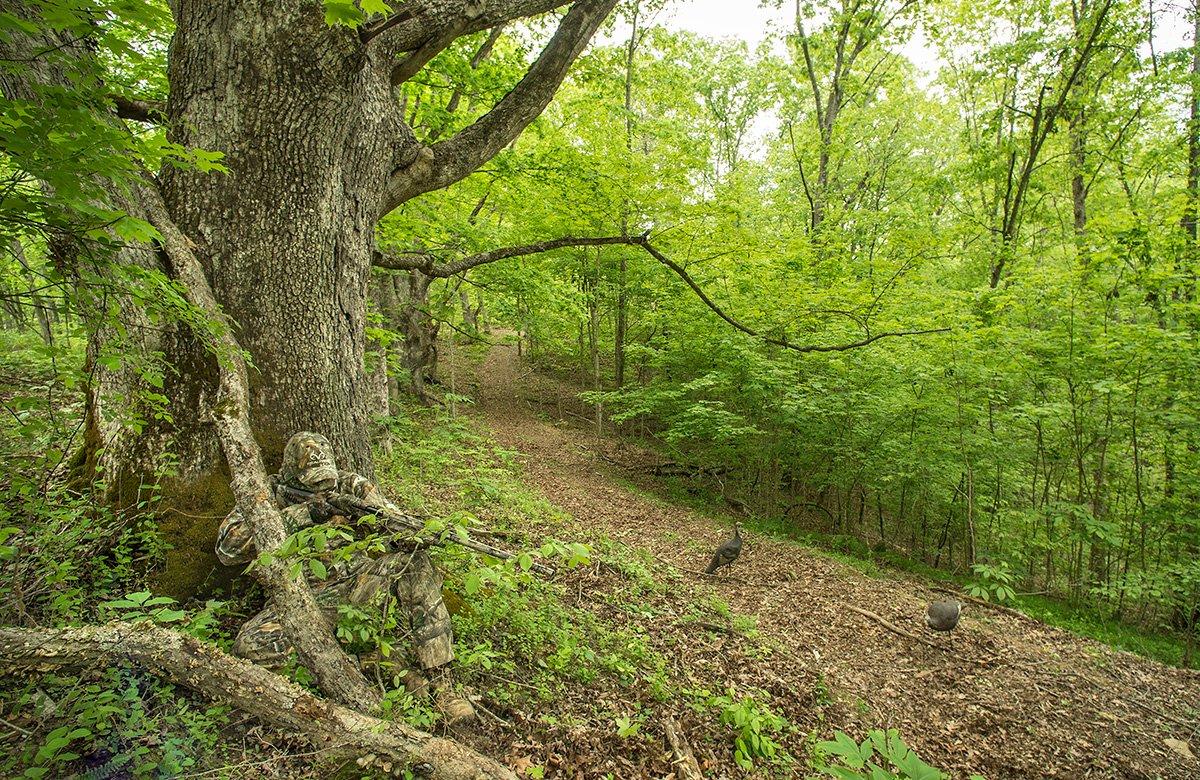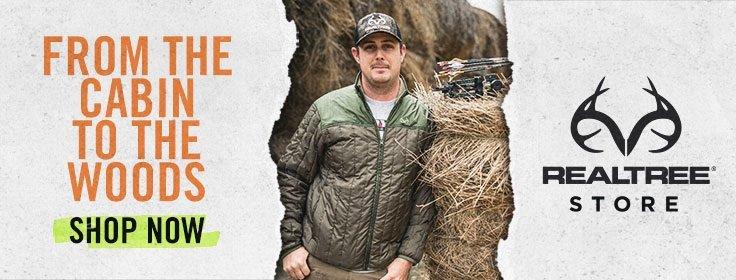The author compiled data on calibers, shot distances, bullet weights, scope magnification and more on 56 trophy big game animals, whitetails to buffalo. Here's what we learned
We learn from experience. We look at the things we do over time, consider averages and anomalies, and make deductions to help us prepare for the future. This is how we know the size hammer we need to drive a certain nail, how fast we can safely take a certain curve, and how nice we must be to our significant other to stay off the couch. Experience teaches.
Sitting in my office looking at the array of big game trophies that adorn the wall, I started wondering what those experiences should have taught me. If you spend much time reading about big game hunting today it will seem that we need high-velocity, flat-shooting cartridges launching heavy-for-caliber bullets, as we sight in on our trophy with a very powerful riflescope.
What's clear is that big game hunters don't really need to shoot all that far to be successful on trophy animals.
Has experience or marketing taught us that? It is what all the outdoor writers are telling us.
I thought by taking the particulars surrounding the 18 trophy big-game animals in my office, trophies I've taken on two countries and in five states over the last 20 years, and by averaging the numbers, I could learn. What has experience taught me with regards to bullet caliber and weight, muzzle velocity, shot distance, and riflescope magnification? The results were surprising. Discounting the three animals taken with a .50-caliber muzzleloader, I discovered the ballistic average suggested a cartridge that's been with us for more than a century. Considering all the animals, shot distance was much less than commonly assumed, and a lot of riflescope magnification was unnecessary.
(Don't Miss: The New Hunter's Guide to Buying Your First Deer Rifle)
Author's Averages
- Average Caliber: .30
- Average Bullet Weight: 156 grains
- Average Muzzle Velocity: 2702 fps
- Average Shot Distance: 166 yards
- Average Riflescope Magnification: 5.67X
The average of a 156-grain, .30-caliber bullet at 2702 fps represents original .30-06 Springfield ballistics. The average shot distance of 166 yards was way less than what the modern press suggests as the norm. And, about 6X magnification is right smack in the middle of 3-9X, which for many years was the most popular riflescope magnification range. But maybe I'm an anomaly. I tend to not shoot at animals at distances where I need to use a ballistic reticle, dial in a correction, or as I like to say, hold off the hair.
To test my numbers, I reached out to a friend, and he provided numbers for 26 trophy animals taken in three countries and in six states by him and his family. Again, discounting animals taken with a .50-caliber muzzleloader, the averages were very similar:
Author's Friend's Averages
- Average Caliber: .30
- Average Bullet Weight: 157 grains
- Average Muzzle Velocity: 2641 fps
- Average Shot Distance: 95 yards
- Average Riflescope Magnification: 6.7X
(Don't Miss: 3 Awesome Stands for Gun Hunting the Rut)
Looking at the animals on both our lists, it was apparent whitetail deer were the predominate species. This is as it should be; whitetails are the most hunted big game animal in North America. I thought it would be interesting, then, to just look at the data associated with whitetails. After all, since 27 of the 44 animals in my study were whitetails, they were probably driving the averages. This seemed to be the case:
Whitetail Deer Only Averages
- Average Caliber: .30
- Average Bullet Weight: 152 grains
- Average Muzzle Velocity: 2700 fps
- Average Shot Distance: 102 yards
- Average Riflescope Magnification: 6X
You would think that given the average ballistics of all three data sets the .30-06 Springfield would also be the most prevalent cartridge. That was not the case. Of the 44 animals in the study, only five were taken with the 30-06. In fact, the data represented 15 cartridges and seven kills with a .50-caliber muzzleloader. But maybe if we only looked at trophy big game animals taken in western states the averages would be different. Not really.
Western Trophy Averages
Average Caliber: .29
Average Bullet Weight: 154 grains
Average Muzzle Velocity: 2683 fps
Average Shot Distance: 134 yards
Average Riflescope Magnification: 6X
(Don't Miss: The 5 Guns Every Outdoorsman Needs)
Why did I keep discounting animals taken with a muzzleloader? Partly because they were all .50-caliber, and this would have weighted the caliber average to the heavy side. Also, partly because the bullet weights were excessively heavy and velocities, when compared to centerfire rifle cartridges, are notably slower. However, what was most interesting is that the average shot distance and average riflescope magnification setting at the time of the shot with the muzzleloaders were similar. (All shots fired with open sights were calculated as a scope magnification of 1X.)
Muzzleloader Averages
- Shot Distance: 99 yards
- Riflescope Magnification: 5X
No matter the game, location, or hunter, the data averages were teaching the same lessons. Well, at least regarding 11 species of big game animals ranging from whitetail deer to elk. But what if Africa was included? I've spent a lot of time hunting in Africa and thought that might alter the results. The average outdoor writer does claim African game is harder to kill. So, I averaged the data for the 12 Africa trophies, including one buffalo, I have in my home. By the way, none were taken with a .30-06 and only two were taken with the ballistically similar .308 Winchester.
African Trophy Averages
- Average Caliber: .30
- Average Bullet Weight: 167 grains
- Average Muzzle Velocity: 2708 fps
- Average Shot Distance: 147 yards
- Average Riflescope Magnification: 4.25X
(Don't Miss: The 5 Best Bullet Styles for Deer Hunting)
Even though it should by now be clear, I lumped the data for all 56 of these big game trophies together and then added the data for eight more scattered through my home. Ultimately, the data represented hunts in five countries and 11 states. (It's worth noting that in every data set, only animals sent to the taxidermist were included. This eliminated many kills that most hunters would not consider a trophy.) The overall averages were, as we've now learned from experience, predictable:
Overall Averages
- Average Caliber: .30
- Average Bullet Weight: 159 grains
- Average Muzzle Velocity: 2689 fps
- Average Shot Distance: 143 yards
- Average Riflescope Magnification: 6X
What about anomalies? It makes sense to prepare for the average, but anomalies exist and not accounting for them would not represent knowledge gained from experience. The longest shot taken on any animal was at 425 yards, but only two of the 64 animals were taken at a distance greater than 400 yards. One was an aoudad taken with a 6.5 Creedmoor and the other a bear taken with a .308 Winchester. Even more surprising was that only 13 trophies were taken at 200 yards or more. So much for long-range hunting. Everyone might want to do it or be prepared for it, but is it really necessary?
So much for long-range hunting. Everyone might want to do it or be prepared for it, but is it really necessary?
Maybe more important was the number of animals taken at a close distance; 45% were taken at less than 100 yards, and 16% were taken at less than half that distance. This could suggest that my friend, his family, and I, are just good hunters and can get close to game. That may or may not be true. What's clear is that big-game hunters don't really need to shoot all that far to be successful on trophy animals.
I've often said hunters should hunt with their feet as opposed to feet-per-second. I think it provides more excitement, decreases missing, and reduces the number of wounded animals. Hard kicking, flat-shooting cartridges are not necessary, and neither are high magnification riflescopes. If you can hunt and shoot, a .30-06, .308, or something ballistically similar, topped off with a 3-9X riflescope is all you need for big game hunting, anywhere in the world.
The data does not lie, and experience teaches. It's our job to do the learning.
(Don't Miss: 15 Tips for One-Shot Kills)










